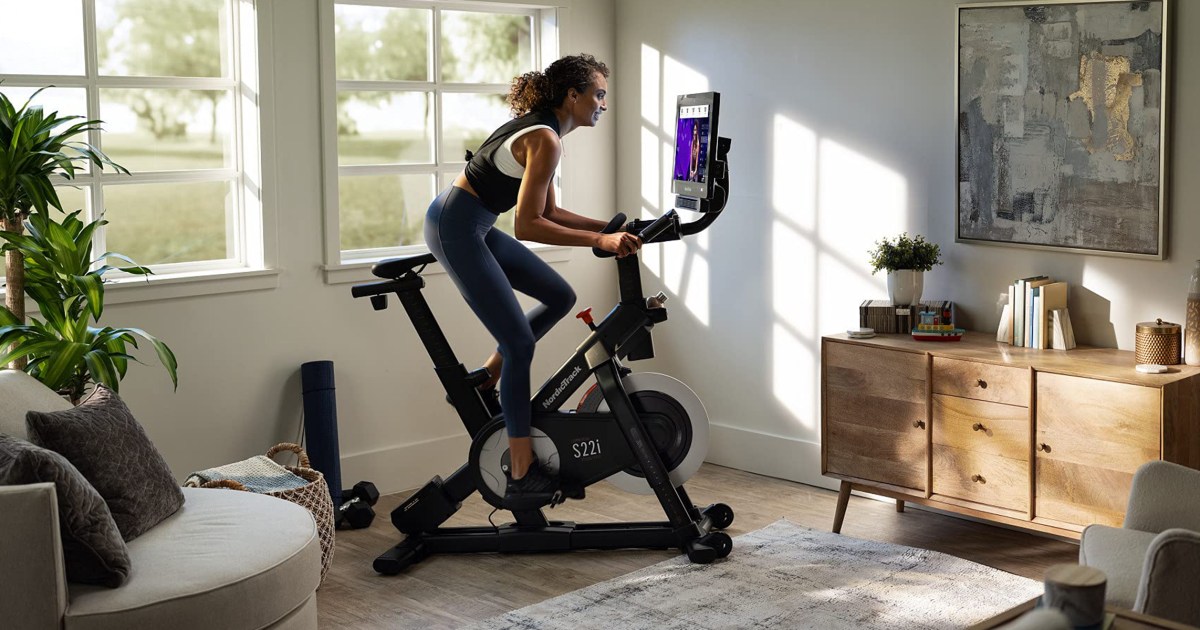
We recently compiled a list of the 7 Best Fitness and Gym Stocks to Buy. In this article, we are going to take a look at where Skechers USA Inc. (NYSE:SKX) stands against the other fitness and gym stocks.
The Fitness Industry: An Analysis
The global wellness market has reached a staggering $1.8 trillion, according to McKinsey. The industry has reached $480 billion in the US alone. 82% percent of US consumers consider wellness a top priority, while those in the UK and China report 73% and 87% respectively.
According to Scott Max, gym memberships are almost half of the fitness industry. Of these, 45% of members are millennials, while 35% are Gen Z. Despite these numbers, today’s fitness industry caters more to the needs of Gen Z. Brands are competing to capture their preferences and behavior. According to NielsenIQ (NIQ) and World Data Lab (WDL), Gen Z’s global fitness spending is projected to reach $12 trillion by 2030.
Under such impressions, Gen Z is called the “Generation Active”. According to Les Mills, 36% of Gen Z are active, while 30% are using fitness facilities. 82% of these are members of gyms or studios, with 72% taking a hybrid approach, training both in and out of the gym.
COVID-19 resulted in the significant closure of gyms and fitness studios, but people are now interested again after the pandemic. Fitness marketplaces like Mindbody ClassPass are now thriving by connecting consumers with studios, gyms, and other wellness providers. It’s a subscription-based platform that allows users to access a variety of fitness experiences with a single membership.
The fitness industry is also seeing new IPOs. According to Reuters, the CEO, Fritz Lanman announced that Mindbody ClassPass is aiming to go public in the next 12-18 months, with Goldman Sachs as its lead banker. The money from the IPO will be used for share buybacks, and buying other businesses. ClassPass, which was acquired by MindBody in 2021, is 65% bigger than pre-Covid, according to Lanman. The overall company, MindBody ClassPass, is projected to achieve a 20% growth in revenue for 2024 (~$500 million).
Good physical strength is associated with mental well-being. Brands can benefit from this focus on physical and mental health and utilize platforms like TikTok to connect with them and offer engaging content. This is especially important for Gen Z, as they spend more hours on their phones as compared to other generations, allowing opportunities for personalized training, and flexible hybrid workout options.
According to Exercise, fitness apps are expected to grow by 21% in the next 5 years. Growing trends of fitness influencers have also positively impacted consumers’ wellness and health intentions. Fitness posts have one of the highest engagement rates on Instagram (~3%).
Gen Z or not, hyper-personalization trends are reshaping how consumers engage with health and wellness. With advancements in technology, individuals seek tailored workouts for their bodies. This shift through apps, wearables, and customized workout plans creates both opportunities and challenges for fitness brands.
Bryan O’Rourke, President of the Fitness Industry Technology Council, said that delivering a customized engagement experience is crucial for retaining members, particularly among Gen Z. Health club members are willing to pay more for a high-value, personalized experience, further driving the growth of boutique studios and small-group training.
According to a McKinsey survey of 5,000+ consumers, AI is a major driver of personalized products and services, where people are using biometrics and gen AI to create customized wellness plans and recommendations. Companies that can offer affordability and clear insights for such services are positioned for success.
The future of wellness is built on science, personalization, and a deep understanding of consumer needs. With the prevalence of weight-loss-assisting drugs, like Ozempic, fitness markets were expected to crash. However, Life Time Chairman and CEO Bahram Akradi says such drugs are only making it easier for people to kickstart their fitness journeys. According to Les Mills, 50% of Gen Z want to exercise regularly but struggle to get started. The availability of Ozempic could drive this generation to surpass millennial gym memberships.
Consumers worldwide are now turning away from unhealthy lifestyles. Investing in fitness stocks offers a compelling opportunity for those looking to capitalize on the growing trend of personalized health solutions. With this context, let’s look at the 7 best fitness and gym stocks to buy now.
Our Methodology
To compile our list, we sifted through ETFs and online rankings to compile a list of 12 fitness stocks. We then selected the 7 stocks that were the most popular among elite hedge funds and that analysts were bullish on. The stocks are ranked in ascending order of the number of hedge funds that have stakes in them, as of Q2 2024.
At Insider Monkey we are obsessed with the stocks that hedge funds pile into. The reason is simple: our research has shown that we can outperform the market by imitating the top stock picks of the best hedge funds. Our quarterly newsletter’s strategy selects 14 small-cap and large-cap stocks every quarter and has returned 275% since May 2014, beating its benchmark by 150 percentage points (see more details here).

A sportsperson running with style and grace, embodying the company’s performance footwear.
Skechers USA Inc. (NYSE:SKX)
Number of Hedge Fund Holders: 45
Skechers USA Inc. (NYSE:SKX) is an American footwear and apparel company that started by designing utility-style boots and is now the third-largest footwear brand in the US. It also makes accessories like hats, sunglasses, bags, and watches, and has nearly 5300 stores worldwide.
In Q2 2024, the company generated a $2.16 billion revenue, $79.35 million less than analyst expectations. Despite a decline in earnings, this revenue marked a sales record, 7.2% higher than the previous year. Domestic sales increased by 7.7%, while international sales (~60% of the total sales) increased by 6.9%.
The sales record was a surprise given currency fluctuations, supply chain disruptions in European shipments, regulatory issues in India causing limited inventory, and low consumer demand in China. This resulted in the company announcing a $1 billion share repurchase plan.
Skechers USA Inc. (NYSE:SKX) made capital expenditures equating to $47.9 million in Q2, in opening new stores and improving D2C technologies. It opened 25 domestic, 98 international, and 194 distributors, licensees, and franchise stores. 12 domestic, 57 international, and 149 distributor, licensee, and franchise stores were also closed.
Rather than venturing into new consumer segments, the company’s COO, David Weinberg, said that there’s a focus on improving planned and existing product lines in the performance athletic market. The company announced the launch of its first soccer/football product in Europe. It also will be moving its basketball target audience to customers other than professional athletes.
Although Chinese sales were lower-than-expected if it wasn’t for the foreign currency fluctuations, the growth in Chinese sales would have almost doubled compared to the reported figures. This shows the company’s growing optimism for the Chinese market, making this one of the best fitness and gym stocks to buy.
Overall SKX ranks 3rd on our list of the best fitness and gym stocks to buy. While we acknowledge the potential of SKX as an investment, our conviction lies in the belief that AI stocks hold greater promise for delivering higher returns and doing so within a shorter timeframe. If you are looking for an AI stock that is more promising than SKX but that trades at less than 5 times its earnings, check out our report about the cheapest AI stock.
READ NEXT: Analyst Sees a New $25 Billion “Opportunity” for NVIDIA and Jim Cramer is Recommending These 10 Stocks in June.
Disclosure: None. This article is originally published at Insider Monkey.








